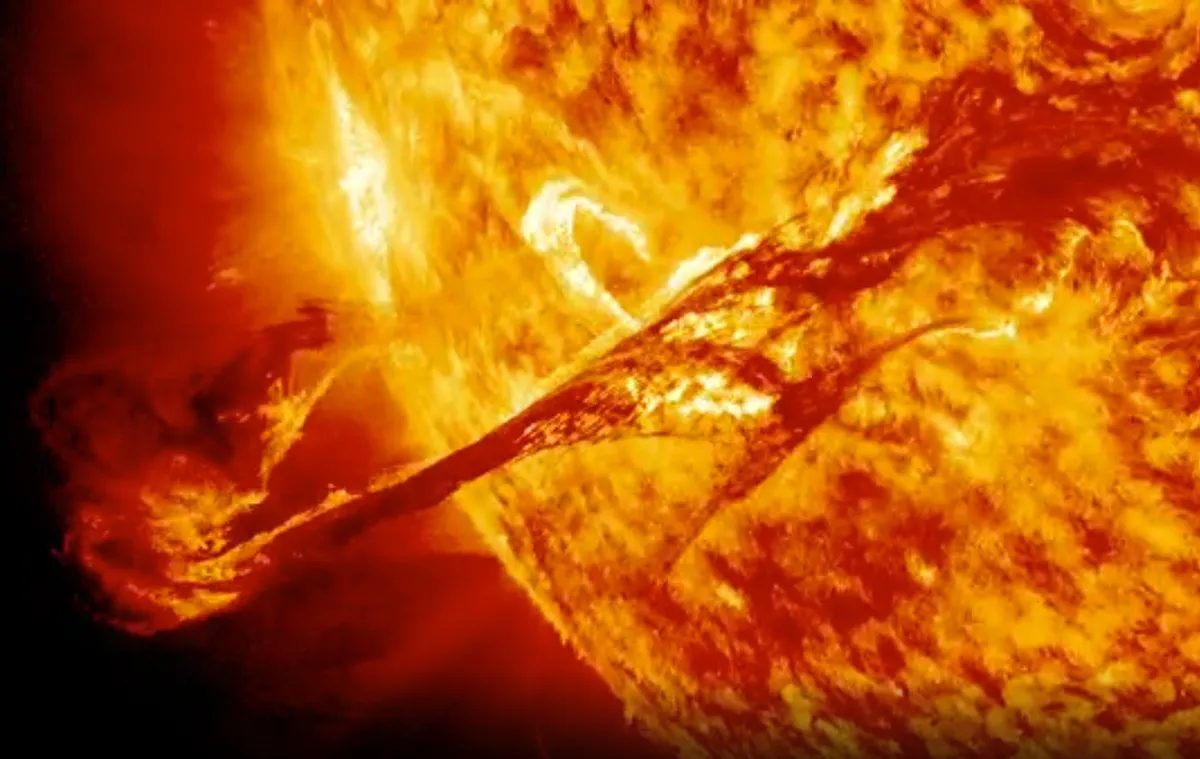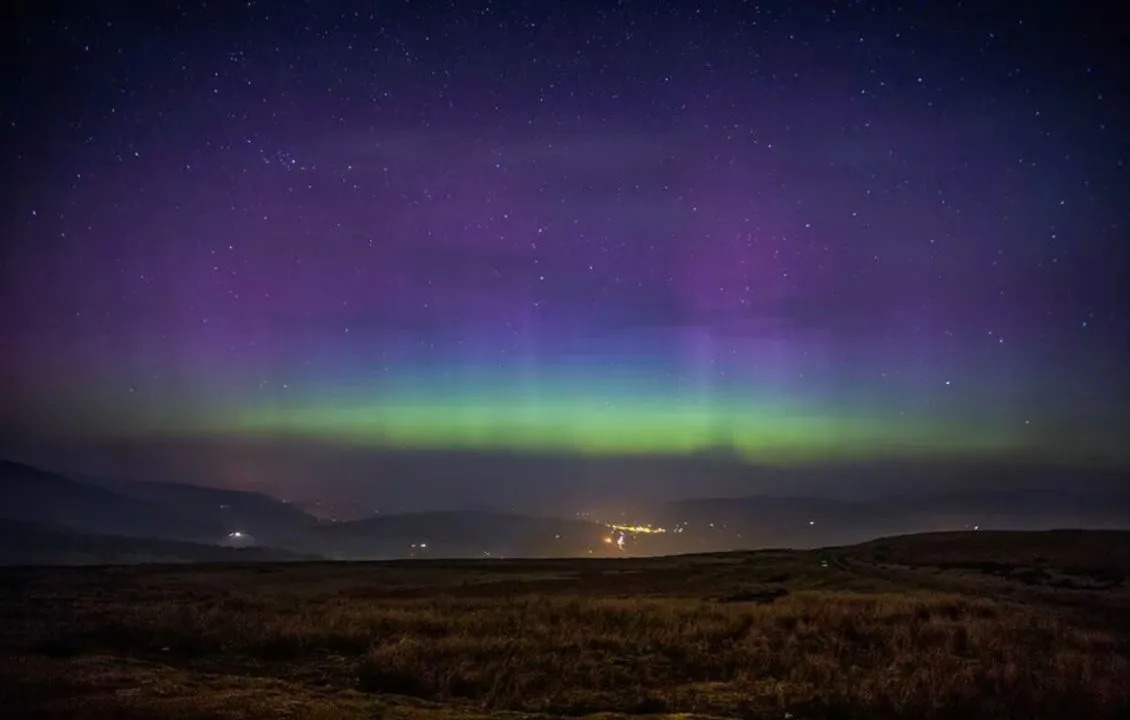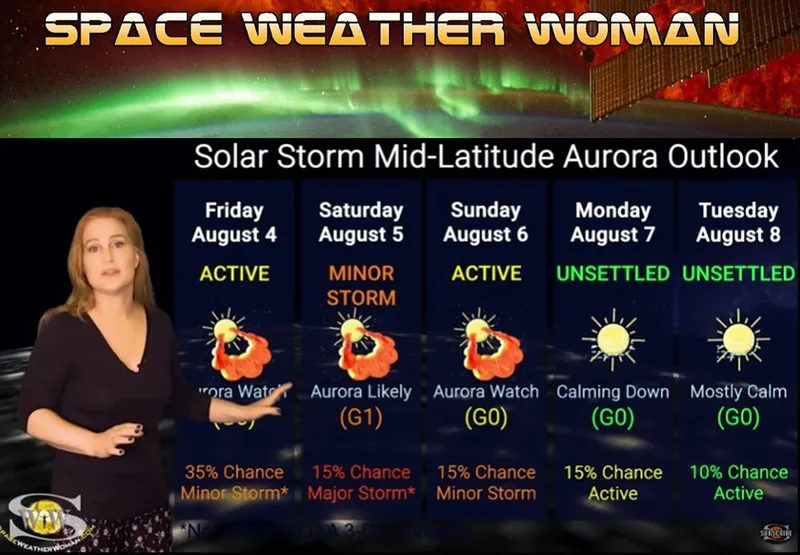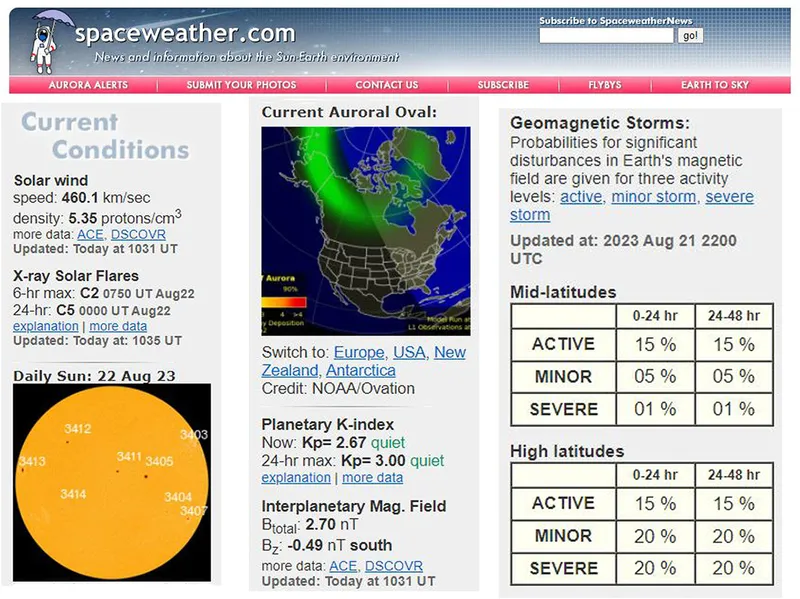How can you predict an aurora display? How is it possible to know when and where the Northern Lights will be visible?
Seeing the aurora borealis (Northern Lights) or aurora australis (Southern Lights) is at the top of many people’s bucket lists.
But you don’t need to travel to the polar regions to see or photograph the aurora. Armed with forecasting data, you can be ready and waiting when the conditions are right.
In this article we'll reveal how to predict an aurora display, and the online resources you can use to help you do so.
What causes aurora?

When charged particles from the Sun, the solar wind, interact with molecules in our atmosphere, they glow.
Earth’s magnetic field channels the particles down towards the polar regions, which is why aurorae are usually seen within the Arctic and Antarctic Circles.
Solar flares and their associated coronal mass ejections (CMEs) can send much higher-energy solar wind towards Earth, causing geomagnetic storms.
On 1 September 1859, Richard Carrington and Richard Hodgson recorded the first visual observation of a solar flare.
Less than 18 hours later, the largest geomagnetic storm ever recorded, the Carrington Event, began.
Aurorae were seen all around the world, even in equatorial locations. It was the first definitive proof that aurorae are directly linked to solar activity.
Find out more in our guide What causes the aurora

What's causing the increase in aurora
It’s not only coronal mass ejections that cause aurora to be visible on Earth.
Disruptions in the Sun’s magnetic field can lead to ‘coronal holes’ that allow faster-moving solar wind to stream out from the Sun, which can lead to mid-latitude aurorae.
As we are currently close to the maximum period of activity in the Sun’s solar cycle, there have been a lot of mid-latitude aurora displays already this year.

How to predict aurora
Space weather is now monitored constantly and scientists are getting better at forecasting aurorae.
We have satellites imaging the Sun in different wavelengths and recording solar flares and CMEs.
Real-time magnetic data and geomagnetic storm predictions are published on websites, social media accounts and apps.
All this information will help you to predict if there’s a chance of aurorae where you are.
However, the only thing you can accurately predict about aurora displays is their unpredictability!

Understanding aurora predictions
Some websites rate the activity level using the Kp Index, with a scale of 1 to 9. The higher the number, the further south (or north) aurora can be seen.
Others publish the interplanetary magnetic field data.
The total value (Bt) is measured in nanoteslas, but also crucial is its polarity (Bz).
If the Bz is negative (the greater the negative value the better), it shows more charged particles are pouring into our magnetosphere, causing a stronger aurora in the coming hours.
To see the aurora, you need a clear view of the northern horizon (or southern horizon if you’re in the Southern Hemisphere) and to allow your eyes to dark-adapt (about 20 minutes).
Visually, aurora displays are not as colourful as they are in photos, so have a realistic expectation of what you’ll see.
If you are at a mid-latitude location, bursts of very active aurorae may be short-lived, so be ready to act fast!

Aurora alert websites
Check these websites regularly to help you predict when and where an aurora display may occur.
sdo.gsfc.nasa.gov/data
The Solar Dynamics Observatory website lets you study photos of the Sun and monitor solar activity
flareaware.com
Gives live updates of solar flares and CMEs, as well as geomagnetic storm predictions and alerts
www.youtube.com/@TamithaSkov
Dr Tamitha Skov, aka Space Weather Woman, provides weekly space weather forecasts and one-off videos when large storms are forecast
spaceweather.com
A fantastic resource for checking auroral activity levels and 48-hour geomagnetic storm predictions
aurora-alerts.uk
This is where to download Glendale, which claims to be the most accurate aurora forecasting and alerting app in the world
6 ways to predict aurora
Inspect solar data for coronal holes

Visit the Solar Dynamics Observatory website and look at the daily 211 angstroms photo.
Any dark regions are coronal holes.
If these dark areas are in the Sun’s equatorial region, faster solar wind will be Earth-directed and may result in geomagnetic storms a couple of days later.
Check for solar flares and coronal mass ejections

Check the Flare Aware website to see how many solar flares have taken place recently and if there are any Earth-directed CMEs associated with them.
Even CMEs that aren’t directly heading for Earth can give us a grazing blow and bump up auroral activity.
Check space weather forecasts

Subscribe to Tamitha Skov’s YouTube channel and watch her space weather forecast videos.
She analyses the NOAA (National Oceanic and Atmospheric Administration) and NASA prediction models following significant CMEs and gives geomagnetic storm probabilities for high-latitude and mid-latitude regions.
Use spaceweather.com's up-to-date info

Spaceweather.com summarises recent solar flares, coronal holes, current solar wind speed, Kp (geomagnetic activity), Bt (interplanetary magnetic field) and Bz (polarity) levels, current position of the auroral oval and probability of geomagnetic storms from high and mid latitudes in the next 48 hours.
Register online for aurora alerts in your area

Register, input your location and the Glendale Aurora Alerts App will provide geomagnetic measurements specific to your area rather than the global readings.
It gives live, real-time alerts, and other app users add green ticks on a map if they have aurorae, so you can see at a glance if you’re in with a chance yourself.
Check aurora webcam streams

There are many aurora webcams around the world, including in Norway, Canada, Finland and the Shetlands in the UK.
Studying the view from live cameras in your country allows you to monitor how active an aurora display is in real time and can help you predict whether the aurora will reach your location.
Have you had an amazing aurora experience, or even managed to photograph it? Get in touch by emailing contactus@skyatnightmagazine.com
